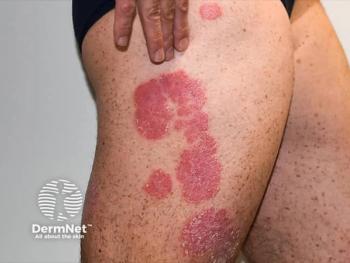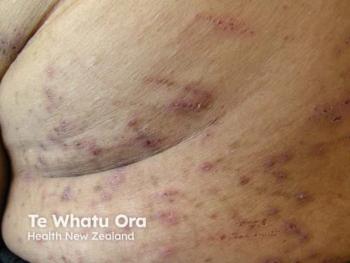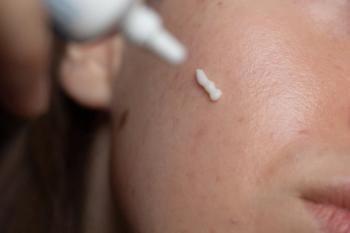
Prolonged Use of Oral Corticosteroids in Atopic Dermatitis Linked to Increased Cardiovascular Risks
Key Takeaways
- Prolonged oral corticosteroid use in atopic dermatitis patients increases MACE and VTE risks compared to short-term use.
- The study utilized a retrospective cohort design with over 52,000 patients from a US health claims database.
Extended oral corticosteroid therapy in patients with atopic dermatitis significantly increases cardiovascular and thrombotic risks, urging careful treatment evaluations.
Extended oral corticosteroid (OCS) therapy in patients with atopic dermatitis (AD) is linked to heightened cardiovascular and thrombotic risks, including major adverse cardiovascular events (MACE) and venous thromboembolism (VTE), versus patients on short-term OCS therapy, according to a new study.1
The study, presented in a poster at the Society for Investigative Dermatology Annual Meeting, May 7-10, 2025, in San Diego, California, suggests clinicians should critically evaluate the risk-benefit profile before prescribing long-term corticosteroids for AD management.
Background and Methods
Historically, guidelines for OCS have advised caution due to potential adverse effects, including cardiovascular events and VTE.2 Yet, most evidence focused on populations with other immune-mediated diseases like rheumatoid arthritis or lupus, leaving a significant knowledge gap about the safety profile in patients with AD specifically.
Recognizing this gap, researchers aimed to investigate the relationship between prolonged OCS use and MACE and VTE in individuals diagnosed with AD. The investigation employed a retrospective, observational cohort design utilizing the Optum Clinformatics Data Mart, a comprehensive US database that aggregates de-identified health claims data. The study population consisted of over 52,000 patients with a documented diagnosis of AD, aged 12 years and older, who initiated oral corticosteroid therapy during the study period.
Patients were categorized based on corticosteroid use patterns, including short-term use (a single prescription with a supply of ≤30 days or 2 prescriptions within 1 month) and prolonged use (1 or more prescriptions exceeding 30 days or multiple prescriptions with longer supply durations).
The study used a "clone-censor-weight" approach to emulate a hypothetical "per-protocol" trial, comparing the risks of MACE and VTE between the 2 groups over a 2-year follow-up.
Findings
The data revealed significant risks associated with long-term OCS therapy.
The crude incidence of MACE was 3.07 events per 100 person-years in the prolonged-use group, compared to 2.62 in the short-term group. For VTE, the rates were 0.43 versus 0.16 per 100 person-years, respectively.
The cumulative probability of experiencing a vascular event over 2 years was higher in the prolonged group, with estimates around 4% versus 3% in the short-term group.
The cumulative risk for VTE markedly increased, with probabilities approximately 0.6% in prolonged users against 0.3% in short-term users.
After adjusting for baseline characteristics, prolonged corticosteroid use was associated with an 81% increase in VTE risk and a 24% higher risk of MACE.
Kaplan-Meier survival curves emphasized the divergence in event-free survival over time, reinforcing that extended steroid therapy correlates with a higher burden of cardiovascular and thrombotic events.
Conclusions
These findings align with guidelines cautioning against routine long-term steroid use but provide quantitative risk estimates specific to the AD population, according to poster authors Lebwohl et al.
Potential limitations to consider include the study's observational nature and residual confounding and a focus on a US population limiting potential generalizability, among other factors.
"Characterizing prolonged oral CS use and the associated cardiovascular and thrombotic risk among patients with AD may help inform treatment benefit-risk assessments," wrote Lebwohl et al.
References
- Lebwohl M, Bunick C, Vleugels RA, et al. Cardiovascular and thrombosis risks of prolonged versus short-term use of oral corticosteroids among atopic dermatitis patients in the United States. Poster presented at: Society for Investigative Dermatology Annual Meeting; May 7-10; San Diego, California.
- Yasir M, Goyal A, Sonthalia S. Corticosteroid Adverse Effects. In: StatPearls [Internet]. Treasure Island (FL): StatPearls Publishing; July 3, 2023.
https://www.ncbi.nlm.nih.gov/books/NBK531462/
Newsletter
Like what you’re reading? Subscribe to Dermatology Times for weekly updates on therapies, innovations, and real-world practice tips.


















